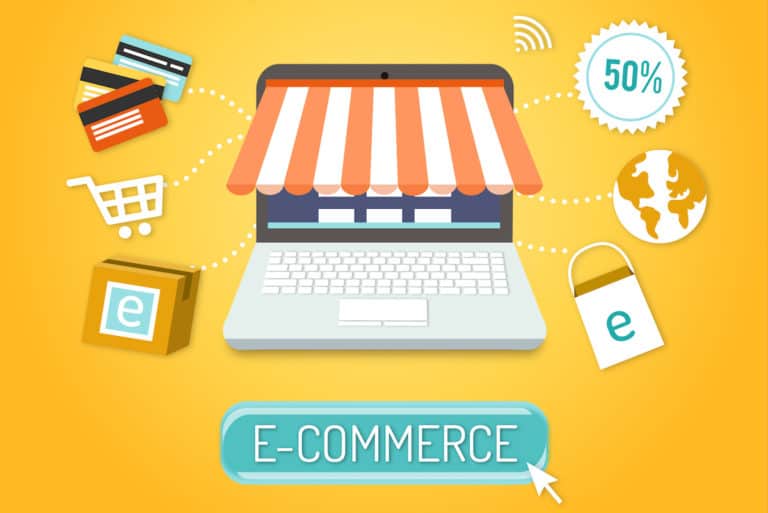
Modern Business Marketing for 2017
Business marketing has a lot of moving parts.
You have to understand who your audience is, where they’re coming from, how they’re getting to your website, and what they’re going to see and do once they’re there. It’s the buyer’s journey from start to finish, and not everyone knows how to do it well.
Luckily, you don’t have to have a business marketing degree to become a good marketer. While technology and methods may shift over time, the core principle is still the same. You have to craft a message and then find a way to get that message out there.
The key to marketing is to take advantage of the things technology can offer and to try your hand at old and new methods alike.
Here are a few of the best ways that eCommerce companies can get their message out to their target market.

Video Marketing
Video marketing gained a lot of traction over the last few years, thanks in part to the popularity of social channels like YouTube.
Ariane Gut, head of Insights and Analytics at Tremor Videos, says that marketers should “go where their audience is,” which in this case is YouTube.
Marketers should “go where their audience is,” which in this case is YouTube. Click To TweetStatistics show show that 43% of consumers want to see more video content from marketers, and 51.9% of marketing professionals worldwide name video as the type of content with the best ROI.
How do eCommerce companies dip their toes into the video marketing pool?
One of the most popular ways to get started in video marketing is to include product instructional videos and “about us” videos that showcase the company’s message and background.
Another type of video that has been catching more momentum in recent years – again, thanks to YouTube – is the unboxing video.
The premise of an unboxing video is simple. You take a newly received product in an unopened box and video yourself removing the products from it to show to your audience. While it seems fairly simple, depending on the style of the video and the popularity of the unboxer, it can be wildly entertaining for viewers.
In fact, over a third of millennials watched unboxing videos this year, and more than 70% say that the content they’ve seen impacted their purchasing decisions.
This makes it a great option for eCommerce companies looking to tap into the video market while still promoting their products across multiple channels. (NerdBlock has great a tutorial for creating unboxing videos here.)
Retargeting
Another business marketing strategy that has gained traction in the last few years is retargeting.
Retargeting (or as Google calls it, remarketing) is the process of serving an ad to a specific group of people based on their past Web-browsing behaviors. This is usually done with cookie-based code on the backend of your website, which is sometimes called a pixel.
The goal of retargeting is to advertise to and convert visitors who came to your site but never bought anything. When they check Facebook, or search Google, ads for your product will reappear, letting them know that you’re still open for business.
If you have Google Analytics and Google Adwords installed on your site, it will automatically track and target visitors in the same way, only without the manual coding on the backend.
You should focus on retargeting certain types of customers and adjusting the type of marketing you send to them. For example, you might display different ads to someone who was browsing high-value items on your site compared with someone who only viewed the cheap stuff.
You could also measure the engagement of customers (through Google Analytics or a tool like Kissmetrics) and create new ads, email campaigns, or promotional materials to send to them.
If you’re not sure how to get started retargeting, or how much it will impact your conversions, ConversionXL wrote some excellent retargeting case studies that may prove useful.
Email Marketing
Email campaigns and email marketing are great ways to retarget customers, but they can reach new customers as well.
When it comes to ROI, email marketing increases lifetime value for customers like no other channel. It’s one of the easiest and best ways (“set it and forget it”) to nurture repeat buyers. In fact, repeat buyers statistically spend 67% more than first-time customers, making them the ideal audience for an email marketing campaign.
In one study, Direct Marketing Association found that one in five companies using email marketing had an ROI of $70 for every $1 spent.
Aside from using email marketing for retargeting, you can also create campaigns that target specific buyers. These can include things like holiday promotion and cart abandonment recovery campaigns.
Abandoned carts are another area where email marketing is a must. The average abandoned cart rate is 69.23% but abandoned cart emails have been shown to recover 15% of lost revenue on average when used consistently (here at Recapture, we average between 18-22% recovery rates based on our customer data for abandoned carts, as well as an overall boost to monthly revenue by 6-8%).
If you don’t do any other email marketing, you should be doing abandoned cart emails.
Other email marketing strategies might include:
- Up-Sell and Cross-Sell Emails – Emails sent to customers who have already purchased an item with the goal to sell them additional products
- Promotional Offer Emails – Emails that might include things like site-wide discounts, new product launches, or first-access to relaunched items
- Customer Loyalty and Re-Engagement Emails – Emails that focus on building a relationship between company and customer or winning back those who have purchased from you before
- Life Event Emails – Emails that drive relationships, like birthday emails with a discount
- Replenishment Emails – Emails that notify customers that certain items have been restocked or are available for pre-order
Email marketing can be a key mechanism for increasing customer lifetime value while providing opportunities and touch points beyond what site visitors would get.

Content Marketing
Content marketing is another growing trend of which many eCommerce businesses are taking advantage.
According to Content Marketing Institute, content marketing is “a strategic marketing approach focused on creating and distributing valuable, relevant, and consistent content to attract and retain a clearly defined audience — and, ultimately, to drive profitable customer action.”
Instead of pitching a product, you instead create and distribute free content that drives traffic to your site and provides additional value for your customers.
One of the best reasons to invest in content marketing is ROI. Studies show that 61% of consumers say that they are more likely to buy from a company that provides custom content.
Content marketing has been known to:
- Increase sales
- Provide marketing cost savings
- Create more customer loyalty
Another study by Demand Metric found that 70% of customers prefer to learn about a company through articles rather than advertisement.
Content marketing is essential for eCommerce companies that want to attract larger audiences and create more value for customers. It also plays a big role in converting website visitors into loyal customers.
Brands that blog regularly have an average conversion rate of 2.9% compared to 0.5% for those who don’t, making it an essential marketing tool to adopt this year. (Here are a few articles from Content Marketing Institute to get you started.)
Final Thoughts about Business Marketing this Year
It’s important to remember that each of these tactics should be incorporated into a larger business marketing strategy that focuses on meeting the needs of your customers.
If you find that your consumer base simply doesn’t watch videos (maybe your target market skews older, for example), you may not find as much success there as those with younger customers.
For the most part, any eCommerce company should be able to promote its business, improve ROI and create more loyal customers by incorporating a few (or all) of these ideas.




